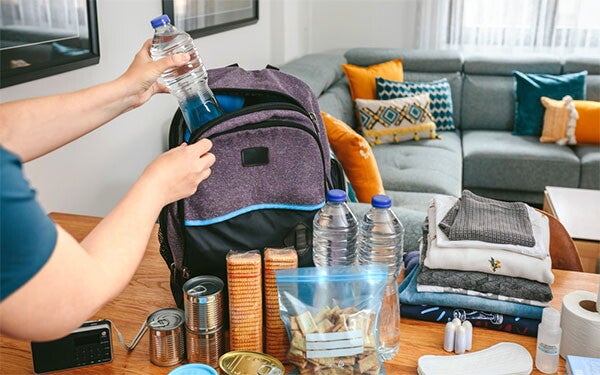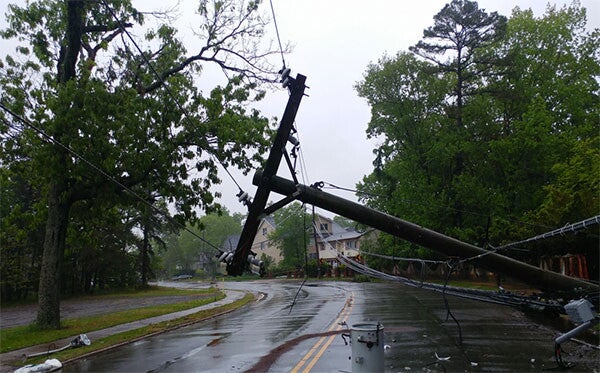
Typhoon Safety Precautions Every Family with Kids Should Take
Living in the Philippines means that typhoon season is a yearly reality. When news of an approaching storm breaks, you immediately start thinking about what safety precautions to take—and with good reason.
A recent study on child health in emergencies reveals that kids, especially those under 5, are the most vulnerable group during natural disasters. The same research also found that proactive preparation is the most effective way to protect them.
This guide provides you with the steps to take before, during, and after the storm to keep your family safe and secure.
What to Do Before the Typhoon Arrives
The key to being prepared is to act even before the storm makes landfall.
Create a family emergency plan
Sit down with your kids and discuss your strategy. Designate a safe room in your house, typically a room on the lowest floor with no windows.
Assign simple tasks to older children so they feel involved and helpful. Also, establish two meeting points, one just outside your home and another outside your neighborhood, in case you get separated and can't return home.
Prepare your Go Bag and emergency kit

Pack a Go Bag with water, non-perishable food, a flashlight, and a first-aid kit. Include your child’s favorite toy or book.
Prepare a Go Bag with essentials to last your family at least 72 hours during an evacuation. This bag should include:
- Bottled water and non-perishable food like crackers, canned goods, and energy bars
- Flashlights, extra batteries, and a fully charged power bank for your phones
- A battery-powered radio to listen to updates
- A first-aid kit
- Copies of important documents (passports, birth certificates, IDs) in a waterproof bag
- Cash in case ATMs and digital payments may not work
- Clothes and toiletries
- For children: Bring diapers, wipes, any necessary medications, and a favorite toy or book.
- For kids with special needs: Pack medications, spare batteries or chargers for assistive devices, noise-canceling headphones, a favorite calming toy or sensory item, and a printed care checklist.
- For pets: Take a few days' worth of pet food and any necessary medications.
If you’re staying at home, ensure you have a stockpile of supplies stored in a large, easily accessible container in case floodwater enters certain areas of your house.
- A larger supply of water (aim for one gallon per person per day)
- A week's worth of easy-to-prepare, non-perishable food for the whole family, and a can opener
- Your complete first-aid kit, along with a full supply of any prescription medications
- Sanitation supplies, such as toilet paper, garbage bags, and disinfectant wipes
- Entertainment to help keep kids calm and occupied, like board games, books, or art supplies
Secure your home and surroundings
Walk around your property to check for potential hazards. Trim tree branches that could fall on your house or power lines. Secure your roof and windows, making any necessary repairs.
Bring lightweight outdoor items like plants, furniture, and toys inside, so they’re not thrown around in strong winds and cause more damage.
Stay informed about the signs of a typhoon
Stay updated on the signs of a typhoon by monitoring official sources like the Philippine Atmospheric, Geophysical and Astronomical Services Administration (PAGASA). Understand the Public Storm Warning Signals so you know what to expect and how to react.
Remember to charge all your devices in advance to ensure you can receive alerts.
What to Do During a Typhoon
Once the storm hits, your priority is to keep everyone calm and safe indoors with these typhoon safety tips.
Stay indoors and away from danger zones
Gather your family in your designated safe room when the storm hits. Stay away from windows, glass doors, and skylights once PAGASA raises Tropical Cyclone Wind Signal (TCWS) No. 2 (62 km to 88 km per hour winds) in your area.
At this stage or higher, winds are strong enough to throw debris that can shatter glass. Do not go outside for any reason until authorities give the official all-clear.
Manage your child’s anxiety
Storms can be scary for children. Reassure them that they’re safe because you’re all prepared. To keep their minds occupied, you can play board games, read stories, or do simple, quiet activities together.
If you have concerns about how your child is coping, you can find helpful tips to help them manage their emotions.
Be ready for power outages and flooding
Keep your flashlights and battery-powered lamps easily accessible. Avoid using candles to prevent fire hazards. If you live in a flood-prone area, be ready to move to higher ground.
If local authorities instruct you to evacuate, do so immediately. Unplug appliances to protect them from power surges when electricity is restored.
What to Do After the Typhoon

Check your surroundings for hazards like downed power lines and clear stagnant water around the house after the storm.
The danger is not always over when the wind and rain stop. Follow these tips on what to do after a typhoon to ensure your family’s safety.
Wait for the official 'all-clear'
Do not assume the storm is over if there is a lull. It could be the eye of the typhoon passing. Wait for an official announcement from PAGASA or your local government unit before heading outside.
Inspect your home and surroundings with caution
Once it's safe to go out, check your home for damage. Wear sturdy shoes and be careful of broken glass, nails, and other sharp objects. Avoid downed power lines and report them to the electric company as soon as possible.
Clear away any stagnant waters in and around your home and continue to use mosquito repellent to help prevent dengue.
The Department of Health (DOH) warns that you shouldn't wade in floodwater, which can contain sewage, chemicals, and disease-causing bacteria that can lead to illnesses like leptospirosis.
Check on your child's emotional well-being
A typhoon can be a traumatic event. Talk to your children about their experience and listen to their fears. Reassure them that they’re safe and give them extra hugs and attention.
If you notice lasting distress in your child, such as frequent nightmares, excessive clinginess, or emotional withdrawal, consult a pediatrician or child psychologist. The Philippine Mental Health Association and the National Center for Mental Health Crisis Hotline (1553) offer support for families recovering from disasters.
Building Resilience by Being Prepared
Taking these safety precautions helps you protect what matters most. A 2025 study in the International Journal of Disaster Risk Reduction found that preparedness is a key factor in building resilience in the Philippines. By having a solid plan—from securing your home to packing a Go Bag—you and your family can weather any storm.
Connect with other parents on the ParentTeam Moms and Dads Facebook group and share your own typhoon safety precautions and tips.
References
Centers for Disease Control and Prevention (CDC). "Preparing for Hurricanes or Other Tropical Storms." Centers for Disease Control and Prevention. Last modified October 9, 2024. Accessed July 23, 2025. https://www.cdc.gov/hurricanes/safety/index.html
Ready.gov. "Build A Kit." Ready.gov. Last modified July 1, 2025. Accessed July 23, 2025. https://www.ready.gov/kit
UNICEF. "How to Prepare for a Hurricane or Typhoon." UNICEF. n.d. Accessed July 23, 2025. https://www.unicef.org/parenting/emergencies/how-to-prepare-for-hurricane-or-typhoon
UNICEF. "Typhoon Safety Information." UNICEF Vietnam. n.d. Accessed July 23, 2025. https://www.unicef.org/vietnam/typhoon-safety-information-parents
World Vision. "World Vision #DapatReady: Essential Tips for Staying Safe during the Rainy and Typhoon Season." World Vision Philippines. n.d. Accessed July 23, 2025. https://www.worldvision.org.ph/staying-safe-during-rainy-and-typhoon-season/









